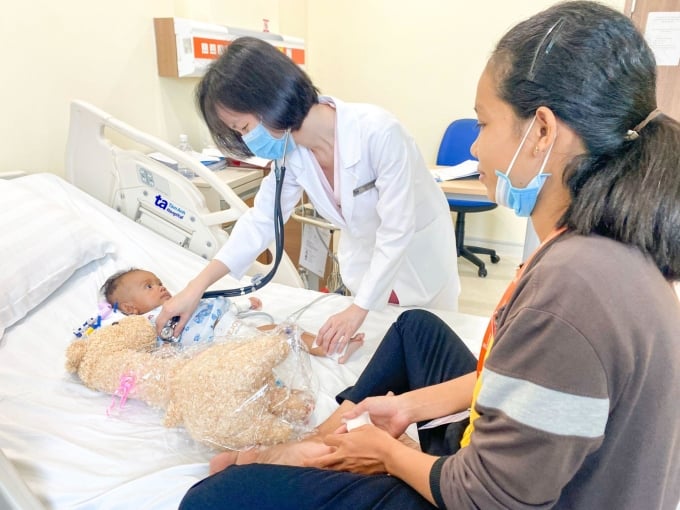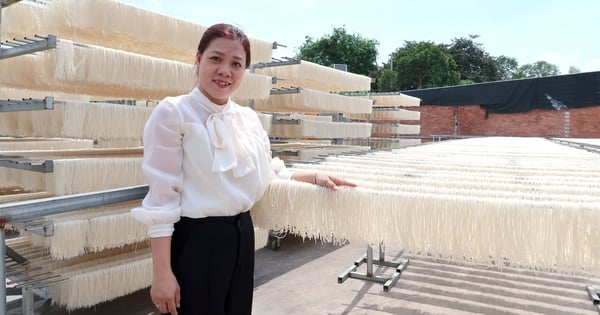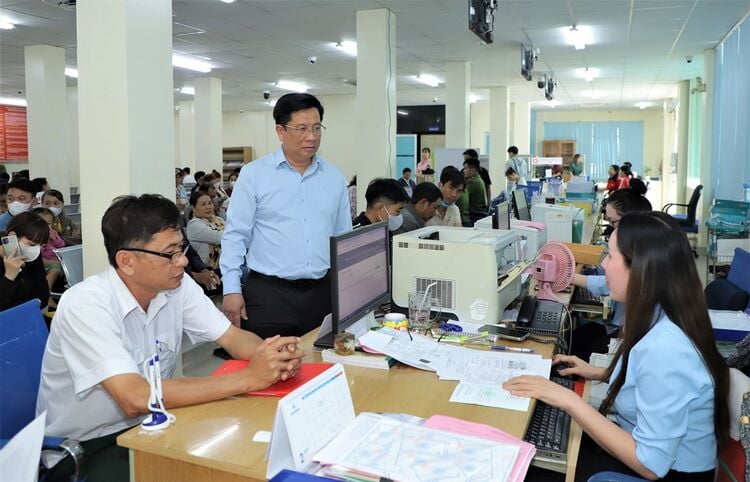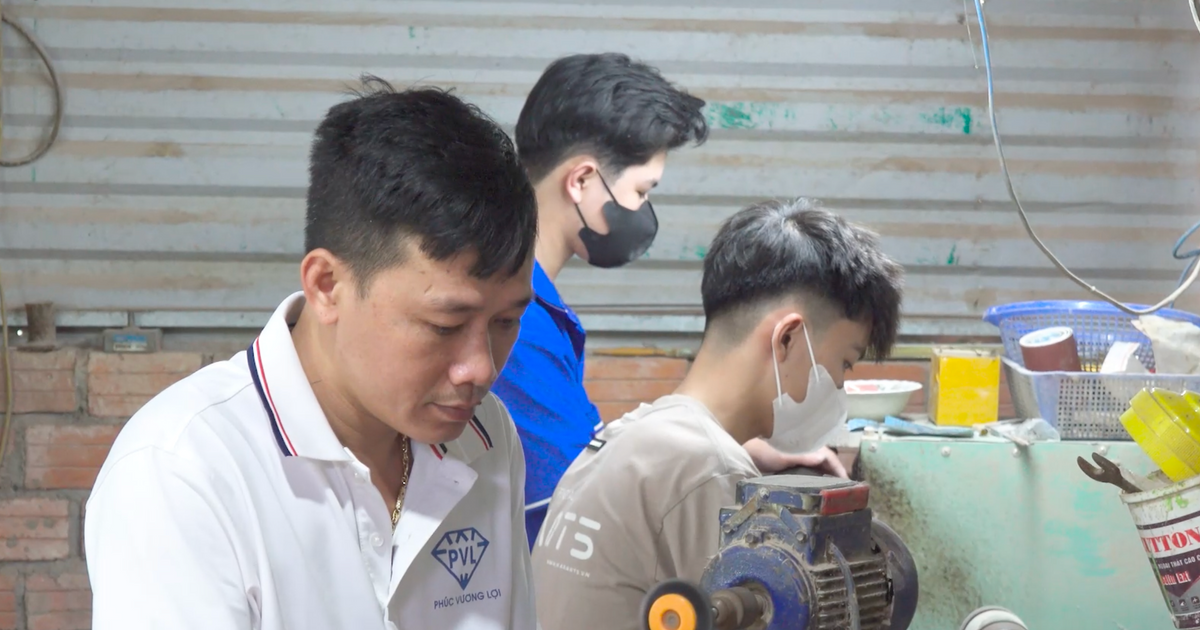A 2-month-old boy with slow weight gain, rapid breathing, wheezing, and excessive sweating was diagnosed with congenital heart disease after a respiratory examination.
Ms. Chanh Soc Thia (Khmer ethnic, living in An Giang) said that after more than a month of giving birth, baby Chanh San Vi Sal did not gain weight, often breathed quickly, wheezed for a long time, sweated a lot on the head, and sucked slowly. She took the baby to a respiratory clinic and the doctor said the baby had congenital heart disease. The young mother could hardly believe the truth because the baby was born chubby, weighing 3.4 kg, and no one in the family had this disease.
After 5 years of waiting for a child, the joy was not complete when Ms. Thia discovered that her child was sick. She and her husband temporarily put aside their work to take their child to Ho Chi Minh City for treatment. Every time they went to the doctor, the whole family rode a motorbike from 3am to Ho Chi Minh City at 9-10am to be in time for the examination and return home the same day. But after more than 2 months of going back and forth, the child still had not had surgery.
Because she saw that her child was not breastfeeding well and losing more weight, Ms. Thia took her child to Tam Anh General Hospital in Ho Chi Minh City for examination. Here, Dr. Pham Thuc Minh Thuy, Department of Congenital Heart Disease, Cardiovascular Center, said that baby Vi Sal came to the examination with symptoms of rapid breathing, sweating, rapid heart rate, poor breastfeeding, malnutrition, and at nearly 4.5 months old, only weighed 5.7 kg.
The echocardiogram results showed that the baby had a large ventricular septal defect (8.5x10 mm) with a dilated left heart chamber, increased blood flow to the lungs, and an average pulmonary artery pressure of up to 41 mmHg (2-3 times higher than normal). At the same time, the baby also had hyperplasia of the right ventricular outflow tract (blood path from the right ventricle to the pulmonary artery) with thickened pulmonary valve leaflets causing lung damage. In addition, the baby had a rare congenital abnormality of the mitral valve (Hammock valve) leading to limited valve function. The mitral valve ring was also dilated due to the dilated left ventricle (due to the large ventricular septal defect), which further increased mitral valve regurgitation.
"The baby needs surgery before 6 months of age. If it is delayed past the 'golden time', the recovery will be worse, and intervention may not be possible due to irreversible damage to the pulmonary blood vessels," said Dr. Thuy.

Dr. Pham Thuc Minh Thuy examined baby Vi Sal to assess her health condition before surgery.
Immediately after that, Vi Sal was admitted to the hospital and quickly underwent surgery. Master, Doctor Nguyen Minh Tri Vien, Consultant in Cardiovascular Surgery, Cardiovascular Center, and the team patched the ventricular septal defect with a piece of the patient's own pericardium, repaired the blood flow to the lungs, and repaired the mitral valve. After more than 2 hours, the surgery was successful. The results of the transesophageal echocardiogram before the incision was sutured showed that the ventricular septal defect was closed, the right ventricular outflow tract was no longer narrowed, pulmonary artery pressure was reduced, and mitral valve regurgitation improved.
Doctor Vien said that baby Vi Sal was severely malnourished, and had many heart abnormalities, the most serious of which were pulmonary hypertension and heart failure. Therefore, the team prepared full equipment for the surgery, such as an artificial heart-lung system (ECMO), a team of surgeons and anesthesiologists with extensive experience in pediatric heart surgery. The baby was anesthetized with a combination of erector spinae plane (ESP) anesthesia to reduce post-operative pain. The surgery time was shortened, the time on the extracorporeal circulation system was reduced, and the patient was weaned off the ventilator early.
Vi Sal left the recovery room after 3 days, pain free and healthy, discharged after a week, continuing regular health monitoring.

4.5 month old baby Vi Sal is healthy and pain free 3 days after open heart surgery.
Signs of congenital heart disease in infants can manifest as recurrent respiratory infections, wheezing, or poor feeding and slow weight gain, which can be easily confused with other respiratory and digestive diseases. Therefore, children are sometimes diagnosed with heart disease during pre-vaccination checks or when they go to the doctor for other illnesses. Dr. Thuy recommends that when a child shows signs such as rapid breathing, wheezing, little feeding, intermittent feeding, prolonged feedings, sweating, cold hands and feet, slow weight gain, paleness...; purple lips, fingertips and toes, worsening when crying, parents should take their child to a cardiologist.
"Symptoms of congenital heart disease can range from subtle to obvious manifestations such as heart failure, severe cyanosis, etc. Actively screening for the disease helps with early treatment and avoids dangerous complications," Dr. Thuy emphasized.
Thu Ha
Photo: Tam Anh Hospital
Source link





![[Photo] Ha Giang: Many key projects under construction during the holiday season](https://vstatic.vietnam.vn/vietnam/resource/IMAGE/2025/5/1/8b8d87a9bd9b4d279bf5c1f71c030dec)
![[Photo] Binh Thuan organizes many special festivals on the occasion of April 30 and May 1](https://vstatic.vietnam.vn/vietnam/resource/IMAGE/2025/5/1/5180af1d979642468ef6a3a9755d8d51)
![[Photo] "Lovely" moments on the 30/4 holiday](https://vstatic.vietnam.vn/vietnam/resource/IMAGE/2025/5/1/26d5d698f36b498287397db9e2f9d16c)
































































































Comment (0)